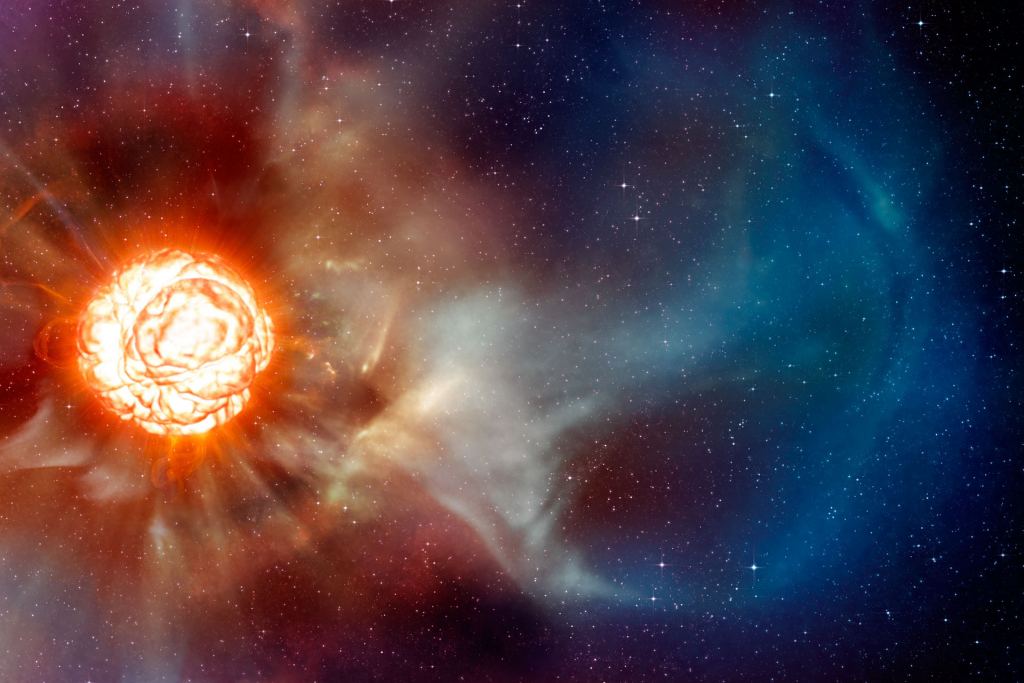Compared to the lifespan of stars, human lives are pretty short. Stars such as Betelgeuse (in Orion) live for millions of years. Others exist for billions of years.
We (if we’re lucky) get maybe 100 years (more or less). So, to us, stars don’t appear to change much over our lifetimes, unless they blow up as supernovae. But, what about over the course of 20 or 30 successive lifetimes? Well, it turns Betelgeuse did experience obvious changes in that span of time—and very visibly so.
And, those changes are in the historical record. In fact, Betelgeuse has been tracked for thousands of years (as we reported earlier this year). In the year 1800 B.
C. E. , an astronomer in China named Sima Qian, noticed that Betelgeuse was a rich, yellowish color.
That’s nothing at all like how it looks to us these days. It’s more of a reddish-orange in our night sky. The familiar constellation of Orion.
Orion’s Belt can be clearly seen, as well as Betelgeuse (red star in the upper left corner). Astronomers of early antiquity saw this star as white-yellow. It’s changed since then.
Credit: NASA Astronomy Picture of the Day Collection NASA Qian wasn’t the only skywatcher to record this star’s color. Based on historical records, a hundred years after Qian, the Roman observer Hyginus described it as yellow-orange, like Saturn. Yet, nearly two thousand years later, around 2 A.
D. , astronomer Claudius Ptolemy noted it was a “bright, reddish star”. That’s a lot of change in a couple of thousand years.
And, it continued. By the 16th century, astronomer Tycho Brahe noted that the star was redder even than Aldebaran (in Taurus). Many observers also compared it to the redness of Antares (another supergiant).
Changing Colors Indicates Internal Change According to astronomer Ralph Neuhäuser at the University of Jena in Germany, the rapid color shift is really about evolution. “The very fact that it changed in color within two millennia from yellow-orange to red tells us, together with theoretical calculations, that it has 14 times the mass of our Sun – and the mass is the main parameter defining the evolution of stars,” he said. “Betelgeuse is now 14 million years old and in its late evolutionary phases.
In about 1. 5 million years, it will finally explode as a supernova. ” Neuhäuser and colleagues studied the historical records for star observations of a number of stars.
They reported their conclusions in a paper published in MNRAS. For Betelgeuse, they wrote, “The color change of Betelgeuse is a new, tight constraint for single-star theoretical evolutionary models (or merger models). It is most likely located less than one millennium past the bottom of the red giant branch, before which rapid color evolution is expected.
Evolutionary tracks from MIST consistent with both its color evolution and its location on the CMD suggest a mass of ~14 Ms at ~14 Myr. ” Color: A Clue to Betelgeuse Aging So, what’s happening to this massive old star that makes it change color so fast that humans can track its change by eye over historical time? As a star like Betelgeuse ages, its brightness, size, and color change. These properties give astronomers clues to the age and mass of the stars.
Essentially, when Betelgeuse’s core ran out of hydrogen, it evolved from a yellow-white star to become a red supergiant. In astrophysical terms, it crossed the Hertzsprung gap, meaning it stopped core hydrogen burning. As it aged, Betelgeuse experienced mass loss, and it began to cool.
It only took a couple of thousand years for it to change color. That means this evolution was fairly quick. Usually, they evolve from blue-white dwarfs to red supergiants over the course of a few millennia.
Betelgeuse did it in two, which indicates its mass, and from that, the scientists at Jena could figure out its age. So, it now turns out that the color change seen in the centuries between Sima Qian’s observations and Ptolemy’s (from white to red) is a characteristic of that evolution. History Helps Investigate the Hertzsprung Gap This idea of using color evolution to investigate the Hertzsprung gap (the end of hydrogen burning in Betelgeuse and other similar stars) is a novel way to track their physical evolution.
Generally, such color changes should be too slow compared to human lifetimes. Researchers also have to take into account different color perceptions between observers, and other issues that crop up when using the historical record. However, clearly the records on Betelgeuse are attention-getters.
The rapidity of change is a clue to some process inside Betelgeuse that helped it “jump the gap” rapidly. Does it happen to other stars? The scientists also studied other stars to see how their colors changed over human time. In particular, they looked at Antares by comparison, which has remained red from antiquity to modern times.
It appears to be a much slower-evolving star. The observable properties (brightness, color, temperature, chemical composition, etc. ) of Betelgeuse and other stars whose colors have been noted throughout history could provide further insight into the physics at work as these stars evolve.
Of course, astronomers will need to calibrate the historical observations carefully with present-day data. But, this information should help pinpoint stellar masses with even higher precision. As the authors state in their paper’s conclusions, “This could provide further insight into the physics of stellar interiors and late evolution of supergiants (and the time left until they go supernova).
The historical color evolution is a new tight constraint on either the single-star evolutionary models or the Betelgeuse merger models. ” For More Information Red Giant Betelgeuse was yellow some 2,000 years agoColour evolution of Betelgeuse and Antares over two millennia, derived from historical records, as a new constraint on mass and age The post Just 2,000 Years Ago, Betelgeuse Was Yellow, Not Red appeared first on Universe Today. .
From: universetoday
URL: https://www.universetoday.com/157533/just-2000-years-ago-betelgeuse-was-yellow-not-red/



